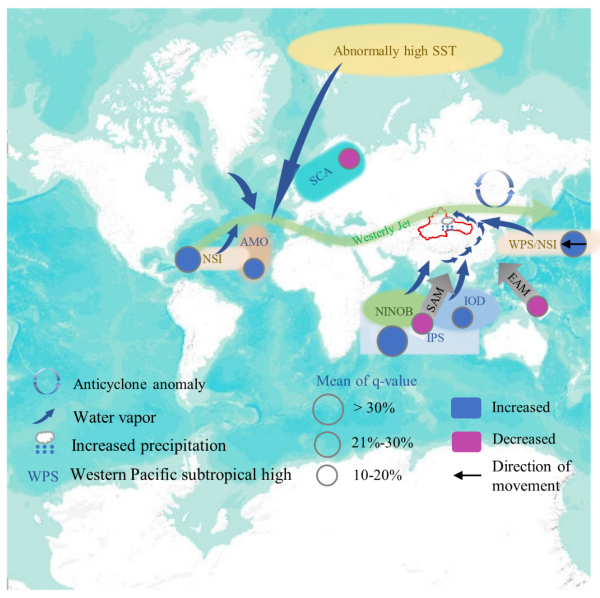2025-04-11 中国科学院(CAS)

Schematic diagram of main processes affecting extreme precipitation in arid Northwest China. (Image by XIEG)
<関連情報>
- https://english.cas.cn/newsroom/research_news/earth/202504/t20250411_1041026.shtml
- https://www.sciencedirect.com/science/article/abs/pii/S0022169425005207
1961-2022年の中国北西部乾燥地域における異常降水量の時間的・空間的変化とそれに関連する大規模気候メカニズム Temporal and spatial changes of extreme precipitation and its related large-scale climate mechanisms in the arid region of Northwest China during 1961–2022
Qixiang Liang, Yaning Chen, Weili Duan, Chuan Wang, Yupeng Li, JianYu Zhu, Ganchang He, Wei Wei, Mengqi Yuan
Journal of Hydrology Available online: 24 March 2025
DOI:https://doi.org/10.1016/j.jhydrol.2025.133182
Highlights
- Between 1961 and 2022, extreme precipitation events in the arid regions of Northwest China became more intense and frequent.
- Sea surface temperature anomalies are the main drivers of EPEs in ANC.
- The interaction of multiple climate factors has greater influence on extreme precipitation than that of a single factor.
Abstract
Extreme precipitation events (EPEs) have an important impact on the hydrological cycle and are the main factors that cause causing flood disasters. Based on the CN05.1 dataset and large-scale circulation factors, six EPE indices are selected to detect changes in extreme precipitation in the arid Northwest China (ANC) region from 1961 to 2022. The correlation between 13 climate factors and EPEs is investigated using the geographic detector model (GDM). The results indicate the following: (1) During the study period, the number of consecutive days without precipitation (CDD) in the extreme precipitation index decreased by 0.65 days per year, and the number of heavy precipitation days increased by 0.0099 days per year. Further, the proportion of annual heavy precipitation days, the mount of annual total precipitation, and the amount of annual maximum single-day precipitation increased by 0.067 %/a, 0.49 mm/a and 0.42 mm/a, respectively. The spatio-temporal intensity, duration and frequency of EPEs also showed an upward trend. (2) EPEs increased significantly in different sub-regions, rising the fastest in northern Xinjiang, followed by the Hexi Corridor, southern Xinjiang, and eastern Xinjiang. (3) Sea-surface temperature anomalies are the main factor leading to the increases in EPEs in ANC. Temperature anomalies in the Atlantic Ocean, Indian Ocean, and Pacific Oceans caused a series of circulation anomalies, increasing water vapor transport to and through China’s Northwest. This study contributes to a more comprehensive understanding of EPE changes in regional water resources and also provides a reference for regional water resources management and disaster prevention.



